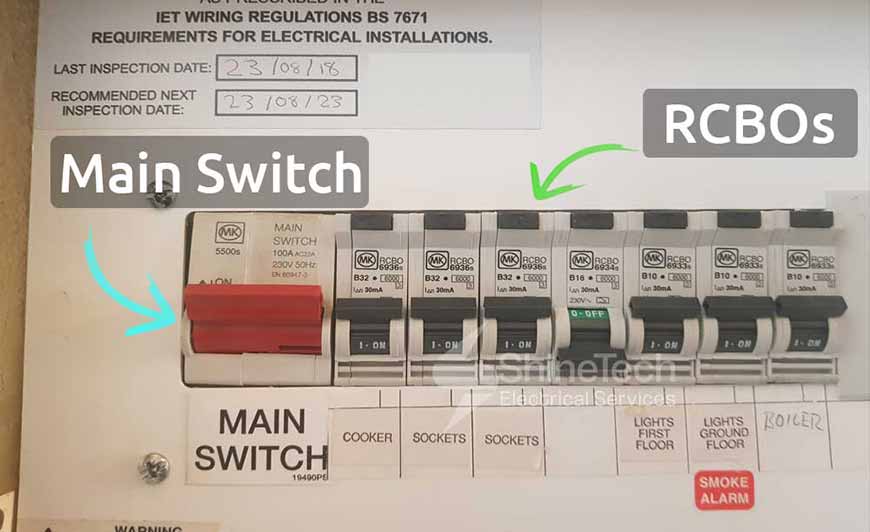Understanding the Conveniences of RCBO CONSUMER UNITS for Modern Houses
Understanding the Conveniences of RCBO CONSUMER UNITS for Modern Houses
Blog Article
The Role of Customer Systems in Efficient Energy Monitoring Solution
Consumer units are integral to reliable energy management systems, offering as the key distribution points for electric power within structures. The advent of clever technologies has further improved their performance, enabling for real-time data monitoring and nuanced energy usage evaluation.
Comprehending Consumer Systems

Understanding the duty of consumer units starts with identifying their essential feature in securing electrical systems. By isolating mistakes within specific circuits, consumer units protect against extensive failures and possible fire dangers. This isolation is attained with making use of breaker that trip or merges that impact when a mistake is discovered, therefore cutting off the electric flow to the influenced circuit.
Additionally, consumer units assist in the well organized circulation of power, improving the effectiveness of power use. They permit the methodical monitoring of electrical loads, which can be especially essential in industrial and business settings where need can fluctuate considerably. Appropriately maintained customer devices contribute to the longevity of electrical systems and assist in lessening downtime triggered by electrical failures, eventually sustaining the seamless procedure of energy-dependent centers.
Smart Technologies Integration

A key advantage of smart consumer units is their capacity to leverage advanced formulas and artificial intelligence for anticipating analytics. This allows for preemptive changes based on usage patterns, weather condition forecasts, and other variables, significantly raising total performance. Additionally, wise consumer devices help with need feedback programs, where energy usage can be dynamically adjusted during optimal periods to maintain the grid and minimize costs.
The integration of renewable resource sources, such as solar and wind, is also streamlined through clever customer devices. By smartly taking care of the intermittency of these sources, these systems make certain a reputable and well balanced power supply. In addition, clever consumer units enhance individual involvement by providing in-depth insights and push-button control abilities via mobile applications, cultivating a more aggressive approach to power conservation and sustainability.
Monitoring Energy Consumption
Structure on the abilities of smart modern technologies combination, keeping track of energy intake ends up being a critical focus within power monitoring systems. By leveraging sophisticated metering facilities (AMI), real-time information on energy use can be collected at granular levels, providing important insights into consumption patterns and peak demand periods.
Smart meters and Web of Things (IoT) gadgets play a critical role in this surveillance procedure. These gadgets can track power use in real-time, transmitting information to central systems for evaluation.
The combination of these modern technologies not just equips consumers with in-depth details regarding their power check this usage yet likewise supports energy companies in taking care of lots distribution extra efficiently. Eventually, specific and continuous monitoring is essential for achieving energy effectiveness, price savings, and sustainability goals within power management systems.
Optimizing Appliance Use

One reliable technique includes recognizing top and off-peak hours to move energy-intensive activities, such as laundry or dishwashing, to times when power need is reduced. This not only minimizes stress on the grid yet also takes advantage of lower energy tariffs. Additionally, incorporating device learning algorithms enables predictive maintenance, making certain appliances operate at optimal performance and extending their life expectancy.
Power monitoring systems can additionally include user-specific preferences and behaviors to customize device use routines. Smart lights systems can adjust illumination based on tenancy and all-natural light schedule, while Cooling and heating systems can maintain comfort levels without too much power use.
Encouraging Sustainability
Advertising sustainability within power management systems includes not just improving performance however additionally fostering environmentally responsible techniques. Customer systems are integral to this procedure, as they provide real-time data and control systems that enable individuals to keep an eye on and reduce their energy usage. By leveraging sophisticated innovations, customer devices can identify energy-saving chances and help with the integration of renewable resource sources like solar and wind power.
One vital element of advertising sustainability is website link educating consumers on the benefits of accountable energy usage. With comprehensive insights supplied by consumer units, individuals can make informed decisions that minimize their carbon footprint. These units can suggest ideal times for running high-energy appliances based on grid need and sustainable energy accessibility, thus minimizing reliance on fossil gas.
In addition, customer systems sustain the adoption of wise grid innovations, which improve the total efficiency and integrity of power circulation. By allowing two-way communication in between customers and energy providers, these systems can dynamically adapt to energy demands, lowering waste and promoting using sustainable power practices.
Final Thought
Consumer systems, as indispensable elements of energy monitoring systems, significantly improve electrical safety and efficiency within structures through circuit security and smart innovation assimilation. In addition, the consolidation of renewable power sources advertises lasting techniques, contributing to decreased overall energy intake and reduced carbon footprints.
Breakthroughs in smart technologies have changed the capacities of power monitoring systems, specifically via the combination of smart consumer devices.Building on the capacities of wise modern technologies combination, keeping track of power intake becomes a vital focus within energy monitoring systems.Effective device use optimization is a critical component of power management read review systems, aiming to enhance performance and decrease unneeded energy intake.Consumer units, as indispensable parts of power administration systems, substantially improve electric safety and security and effectiveness within buildings with circuit protection and wise technology integration. Furthermore, the incorporation of sustainable energy resources promotes lasting techniques, contributing to reduced overall power intake and reduced carbon impacts.
Report this page